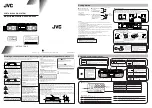
November, 1999
6880906Z38-O
-11
Telario TS3000 Control Station Installation Manual
Installation
Telario installations follow a seven-step process, starting with a pre-sale site
survey and ending with training users working on a tested system.
Pre-Sale Site Survey
The first thing you need to do is visit your customer’s site, verify that a Telario
system will meet the customers’ requirements, and verify that the site qualifies
for Telario coverage. A single Telario Control Station can cover up to 250,000
square feet on a single floor. Once this is confirmed, you will need to make a
note of what the longitude and latitude is for the site (www.mapblast.com).
This information is required for UTAM, and for the system programming.
Additionally, you will need to determine if the county your customer site
resides in is a Zone 1 or Zone 2 county. If the site is designated as Zone 2, you
must follow the UTAM coordination procedures (refer to UTAM section start-
ing on page 2).
Follow-Up Sales Call
Once you’ve verified that your customer site matches the Telario System cov-
erage capabilities, specific user needs and how those needs match up with the
Telario System capabilities must be identified. Be sure to document all this
information carefully because it will be needed for system programming.
Some examples of questions you will need to answer to assist in system con-
figuration preparation:
•
How many work groups are required?
•
Who will be in each work group?
•
Who needs telephone capability, and with what restrictions?
•
Who needs just a radio?
•
What, if any, accessories will be needed?
•
How many TC3000 Communicators and TR3000 Radios are needed?
Pre-Installation Site
Survey
A pre-installation site survey is critical to the success of the Telario System
installation and will require technical support in addition to sales.
Identify Coverage Needs
As part of your pre-installation site survey, coverage needs should be deter-
mined and tested. In planning RF coverage for a site, create a simple site map
– an RF coverage floor plan. Regardless of facility size, create a rough sketch of
the exterior dimensions, including ceiling height. Then, walk the site. Identify
any metal walls, racks or other metal structures and their height and draw
them on the map. Identify all of these on the map. Your goal is to spot possible
Control Station locations and identify the worst-case coverage locations.
Control Station Placement
Generally, consider the following rules for the Control Station placement:
•
as high as possible
•
nearest the center of the building
•
in a wide open space
•
visible to windows or doors on all sides of the building
•
in plain sight
•
no metal within 12 inches of the Control Station non-mounting surfaces
(sides and top)
If the customer requires coverage of an area outside of the building – like a
parking lot or yard area – be sure there is a propagation path to the area. Large




































